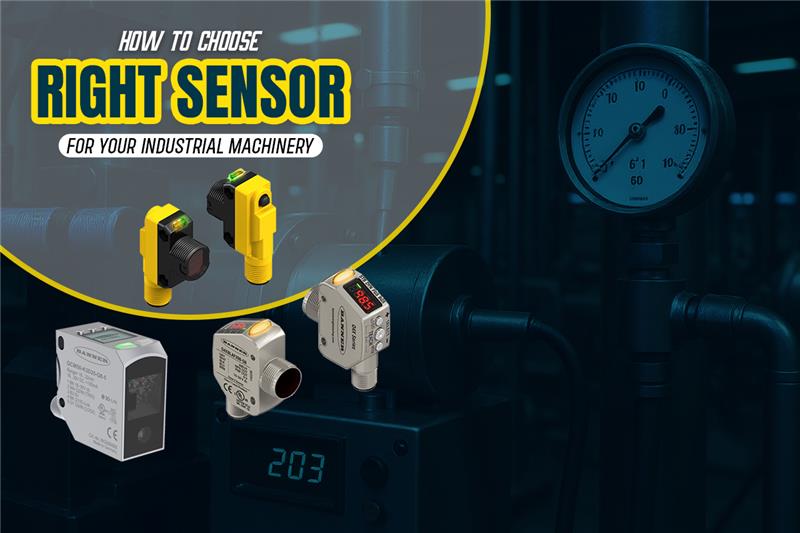What is a Sensor?
A sensor is an instrument that senses physical changes in the environment and translates them into forms that can be read by machines or control systems. These changes may be temperature, pressure, proximity, motion, light, or chemicals.
In machines, sensors play an essential role in:
- Monitoring performance
- Fault detection
- Process automation
- Safety
- Energy efficiency
Types of Sensors
Various tasks require various sensors. Here are some typical ones:
1. Proximity Sensors
Sense the presence of objects without coming into contact with them.
Applied in: Position sensing, object counting, assembly lines.
2. Temperature Sensors
Measure heat levels in machines or environments.
Applied in: Boilers, HVAC, motor monitoring.
3. Pressure Sensors
Provide a measure of pressure in fluids or gases.
Applied in: Hydraulic and pneumatic systems.
4. Photoelectric Sensors
Employ the use of light for object presence or distance sensing.
Applied in: Packaging, conveyors, detection of transparent objects.
5. Level Sensors
Measure the level of liquid or solid material in tanks or silos.
Used in: Storage, bottling, chemical plants.
6. Flow Sensors
Monitor the flow rate of liquids or gases.
Used in: Water treatment, fuel systems, chemical industries.
7. Vibration Sensors
Monitor abnormal vibrations to foretell failure.
Used in: Predictive maintenance, motor health.
8. Position Sensors (Encoders)
Monitor the position or rate of moving parts.
Used in: Robotics, motors, conveyor belts.
Key Factors to Consider When Choosing a Sensor
Selecting a sensor isn’t a one-size-fits-all proposition. You’ll have to take into account:
1. Your Application
What do you want the sensor to measure or sense? The sensor type varies with the task—temperature, movement, pressure, etc.
2. Environmental Conditions
Will the sensor be used in harsh, dirty, wet, or explosive environments? Ensure that the sensor is constructed to withstand those conditions—check for IP ratings, explosion-proof ratings, and corrosion resistance.
3. Accuracy and Sensitivity
How accurate do the measurements need to be? For high-performance equipment, accuracy is very important.
4. Type of Output
Sensors may provide analog, digital, or even wireless outputs. Select according to what your control system can handle.
5. Mounting and Size
Measure the space available for mounting and choose a sensor that will fit and match well with your system.
6. Response Time
In high-speed applications such as robotic arms or CNC machines, response time is very important.
7. Life Expectancy and Durability
Select industrial-grade sensors that can last for years with minimal maintenance.
Sensor Selection Tips
- Always check the datasheet prior to buying.
- Test the sensor in actual applications before full implementation.
- Sync sensor voltage and communication type to your controller.
- Use reputable industrial brands for improved reliability and support.
- If unsure, call an automation professional or system integrator.
Sensor Brands used in Industrial Automation
Some of the following brands are reliable names to trust:
- Omron
- Siemens
- Honeywell
- Pepperl+Fuchs
- Balluff
- Schneider Electric
- SICK
Every brand is strong in certain applications such as proximity detection, environmental sensing, or optical systems.
Advantages of Selecting the Appropriate Sensor
✔ Higher machine uptime
✔ Increased operational safety
✔ Precise data collection
✔ Lower maintenance costs
✔ Improved product quality
✔ Optimum energy consumption
Disadvantages of Using the Incorrect Sensor
✘ High breakdown rates
✘ Inaccurate readings
✘ More downtime
✘ Energy and resource wastage
✘ Safety risks

